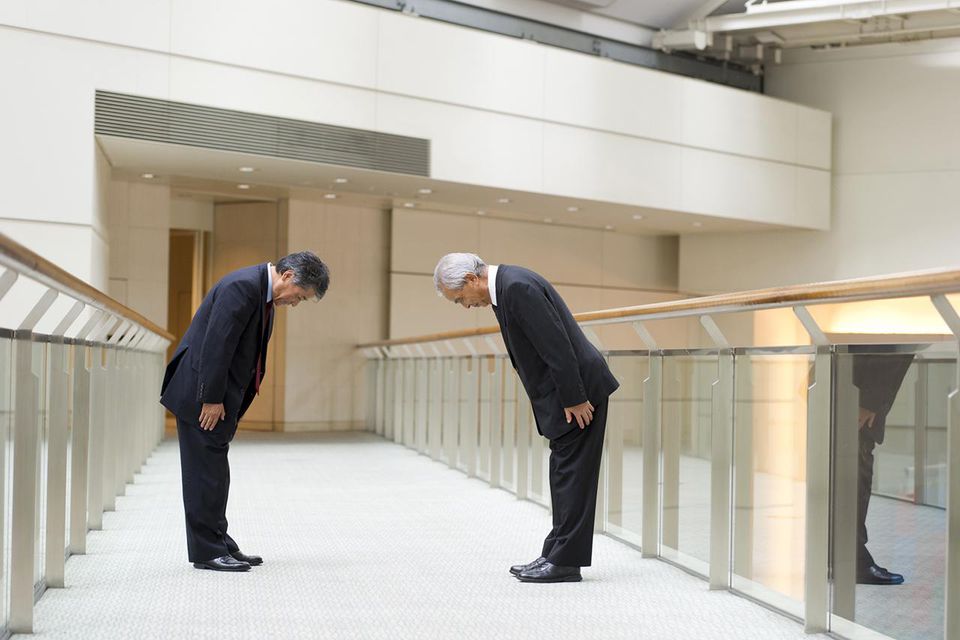“Let me tell you a story. A long time ago, when the pandemic of coronavirus was unheard of, people lived different lives. We mingled freely, hugged each other, went out into the world at our whim and fancy, travelled wherever our hearts desired. Then corona happened…” This story, seems like a pre-apocalypse tale that happens in the future, sadly for us it is our reality. As social distancing became the norm, handshakes to high-fives became obsolete and the world adopted some unique ways to move beyond the social distancing and continue greeting. Now as we have to greet so many people around us, let us look around at different cultures and how they greet themselves and their neighbours. These social distance friendly, no-touch greetings from around the globe deliver a warm, risk-free welcome — and may just be the way of the future.
1. Namaste
In Southeast Asia, from India, Bangladesh, Nepal, people press their palms together at their heart centre and bow their heads slightly in salutation. This gesture is called Anjali mudra in yoga and is customarily accompanied by the word ‘Namaste’, which means in Sanskrit, “I bow to you.” While many may assume it is associated with yoga, the very act of Namaste is a spiritual act, one that signifies respect and gratitude while saying, “the Divine in me bows to the Divine in you.”

2. Bow
In Japan, it is believed that bowing to others as a form of greeting, originated with the introduction of Buddhism from China between the sixth and eighth centuries. At that time, bowing reflected one’s social status. Meeting someone of higher standing, one was expected to bow, making yourself shorter as a sign of deference. In modern Japan, bowing serves a variety of functions and today people bow to say thank you or apologize, to mark the beginning or end of a ceremony or meeting, and, of course, in greeting. A bow can convey different meanings depending on one’s posture: the deeper the bow, the more respect that is being shown.

3. Shaka
Everyone in the Hawaiian Islands, from the surfers to cab drivers, news anchors, grandparents, and children, greet each other using the shaka. To make a shaka, frequently recognized as the symbol that means, “hang loose,” extend your thumb and pinky finger while curling your three middle fingers toward your palm. The gesture, often accompanied with the enthusiastic exclamation of, “shaka, brah!” is said to date back to the early 1900s when a sugar mill worker got his hand caught in the rollers, crushing his middle, index, and ring fingers. After the accident, he became the plantation’s security guard and waved his maimed hand to shoo local kids away when they tried to jump the trains at Kahuka Station. The kids replicated the gesture to signal that the guard was not around and the coast was clear. These days, the shaka is a simple way to greet someone with a bit of an aloha spirit.

4. The Wai
In Thailand, people greet one another with a gesture known as the wai. Like namaste, the wai brings the hands together in prayer at the centre of the chest and bowing the head. Beyond its use in both greeting and parting, the wai also acts as an apology, a way to express thanks, or a show of respect for an elder — the higher up your thumbs touch, whether they’re placed on your chest, chin, nose, or forehead — the more respect you show.

Also Read: Did You Know That The Most Dangerous Place In The World Is Inside Sahara Desert?
5. Place Your Hand On Your Heart
Throughout the Nation of Islam, Muslims use the Arabic phrase ‘As-Salaam Alaikum’, which translates to “peace be upon you,” in greeting. While the accompanying gestures vary from place to place, putting the right hand to the heart demonstrates genuine happiness to meet someone. When it comes to Arabic culture #CTCraves For 7 Lip-Smacking Ramadan Dishes In Bangalore

6. Stick Out Your Tongue
In western culture, sticking out your tongue at someone is considered impolite and insulting. Just imagine an obnoxious child teasing another on the playground shouting, “nyah nyah!” But in Tibet, the gesture dates back to the ninth century and a mean, black-tongued king named Lang Darma. As Buddhists, Tibetans believe in reincarnation and after Darma’s death by assassination, it was feared the cruel king would return. For centuries, Tibetans have stuck out their tongues in greeting as a way to prove that they were not Darma incarnate. The expression is also a way to show agreement and respect. Forget Mini Tibet, Head To South Delhi For Most Authentic Laphing In The City

We hope these gestures of greetings used across the world will help us bridge new connections in a world where our kindness shines across, cutting the negativity away. We hope these gestures help you express your gratitude towards those who extend the warmth of friendship towards you.
First Published: May 21, 2020 9:00 AM



